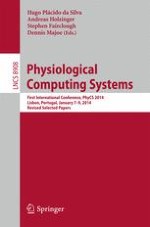2014 | OriginalPaper | Buchkapitel
Learning Effective Models of Emotions from Physiological Signals: The Seven Principles
verfasst von : Rui Henriques, Ana Paiva
Erschienen in: Physiological Computing Systems
Verlag: Springer Berlin Heidelberg
Aktivieren Sie unsere intelligente Suche, um passende Fachinhalte oder Patente zu finden.
Wählen Sie Textabschnitte aus um mit Künstlicher Intelligenz passenden Patente zu finden. powered by
Markieren Sie Textabschnitte, um KI-gestützt weitere passende Inhalte zu finden. powered by
